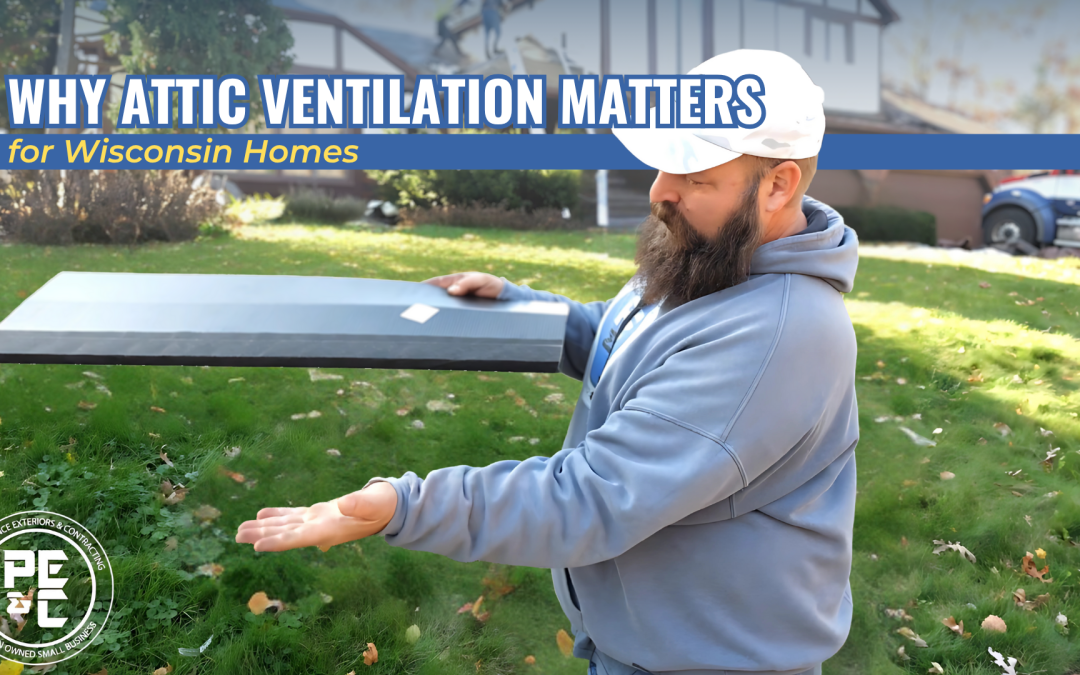Your attic may not be a space you think about often, but it plays a critical role in protecting your home all year long. In Wisconsin, where homes experience both freezing winters and humid summers, attic ventilation helps regulate temperature, reduces energy costs, and extends the life of your roofing system.
The Purpose of Attic Ventilation
Attic ventilation works by allowing air to flow in and out of your attic space. This exchange of air prevents moisture buildup in winter and heat accumulation in summer, both of which can damage your home over time.
Here’s how it works across the seasons:
Unvented Attics: What Can Go Wrong
Summer Heat Risks
Without proper ventilation, Wisconsin attics can turn into ovens during the warmer months. The heat trapped in your attic radiates into your home, making it harder to keep your living space cool. This leads to higher air conditioning use and higher energy bills. Over time, extreme attic heat can also cause asphalt shingles to curl, crack, and wear out prematurely.
Winter Moisture Problems
In winter, warm, moist air from inside your home rises into the attic. If it has nowhere to go, this moisture can freeze on cold surfaces. When temperatures rise again, it melts and soaks insulation, wooden beams, and roof decking. This not only reduces your insulation’s effectiveness but can also lead to mold, mildew, and costly structural damage.
Ice dams are another serious issue in Wisconsin. When a warm attic melts snow unevenly on your roof, the runoff can refreeze at the roof’s edge, forming ice dams. These block further melting snow from draining properly, potentially forcing water under shingles and into your home.
Vented Attics: Protection Year-Round
Cooler Summers
A properly vented attic in summer allows heat to escape, helping to keep your living areas cooler. This reduces the load on your HVAC system, lowers energy consumption, and keeps your roof in better shape for longer.
Drier Winters
During the cold season, attic ventilation helps release moisture before it can freeze. At the same time, it keeps the attic closer to the outdoor temperature, promoting even snow melt and reducing the risk of ice dams. This consistency helps protect your roof and gutter system from the weight and water damage that ice dams can cause.
See It in Action!
Curious how attic ventilation gets installed? Watch as Adam from our team walks you through a PE&C project where we added an air intake ventilation system. This behind-the-scenes video shows how proper airflow is set up to protect homes just like yours year-round.
Wisconsin Homes Need Seasonal Protection
From the bitter cold of January to the humidity of July, homes in the Greater Madison area face some of the most extreme seasonal swings in the country. Investing in proper attic ventilation is one of the smartest ways to protect your roofing system, lower your energy costs, and improve indoor comfort year-round.
Not sure if your attic is properly ventilated?
Schedule a free inspection with Performance Exteriors & Contracting today to ensure your home is protected in every season!

